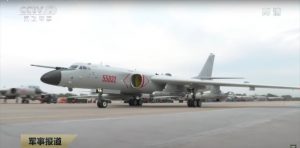The Department of Defense’s recent 2020 China Military Power Report reiterated an assessment first made in the 2018 China Military Power Report: that the Chinese People’s Liberation Army (PLA) has re-assigned the PLA Air Force (PLAAF) with a nuclear counterattack mission after a several-decade-long hiatus. (The PLAAF conducted most of the PLA’s early nuclear testing, but the PLA then-Second Artillery, now Rocket Force, later took on the role as China’s primary nuclear force.) This assessment is based on the fact that the new H-6N bomber is capable of carrying a new air-launched ballistic missile, currently in development, that may be nuclear-capable.
Unlike platforms that the PLA explicitly associates with nuclear missions, such as intercontinental ballistic missiles and ballistic missile submarines, it is harder to positively demonstrate China’s intent to use long-range bombers as part of a nuclear triad just because they are technically capable of delivering a nuclear payload. However, there is now a growing body of evidence to suggest that China has created an operational bomber unit tasked with conducting nuclear strikes, alongside the acquisition of weapon systems needed to conduct air-launched nuclear strikes.
Where Did the H-6Ns Go?
The first piece of evidence suggesting that the PLA has elevated a new bomber unit is the disappearance of China’s new H-6N bombers.
The PLA finally unveiled the new H-6 variant, capable of aerial refueling, at its 70th National Anniversary military parade in 2019. Although the refueling probe and semi-recessed underside fuselage, capable of mounting an air-launched ballistic missile, attracted the most attention, the numbers painted on the side of the aircraft merit equal scrutiny. The three H-6Ns featured in the parade had “55301,” “55302” and “55034” painted onto their fuselages. The PLAAF uses these numbers, called “bort numbers,” to identify the unit to which a particular aircraft belongs. But the 553XX numbering scheme does not conform to any known PLAAF bomber unit.

Figure 1: H-6J 55032. (Screen capture from CCTV-7 Military Report on October 4, 2019)
To further complicate issues, these aircraft cannot be found at any known PLA H-6 base on publicly available overhead imagery dating from after the parade, nor in any handheld photographs released by PLA official press sources. However, it is possible that the PLAAF may have stationed this aircraft at an airfield not previously associated with an active H-6 unit.
Facility Built for Nuclear War
Enter Neixiang Airfield. Although historical Google Earth imagery shows that this airfield only saw periodic use hosting transport aircraft from 2010 to 2015, it now appears to be a facility built with nuclear operations in mind.
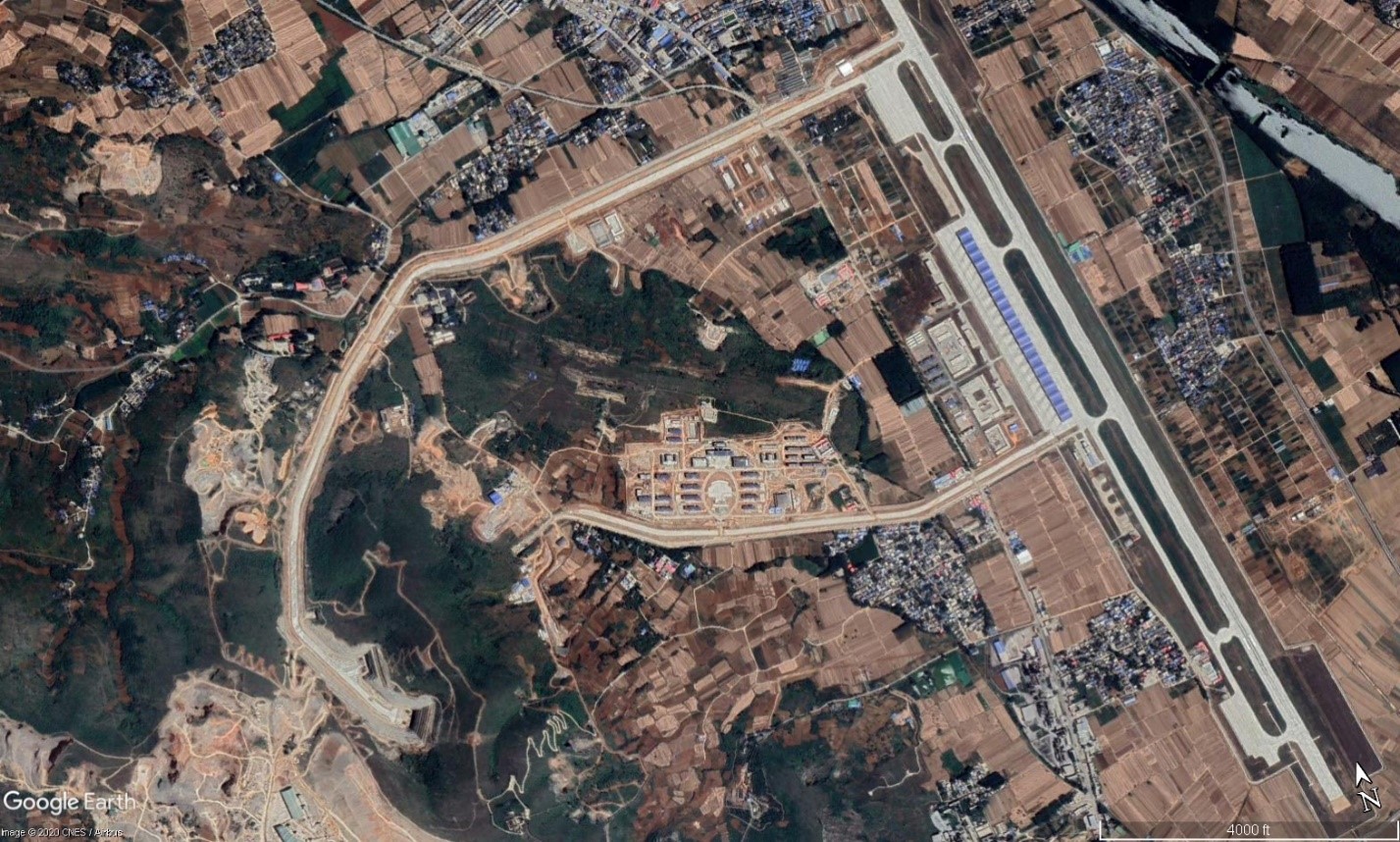
Figure 2: Neixiang Airfield in May 2020. (Google Earth)
In July 2017, the PLAAF initiated a major renovation of the airfield to include larger aprons, large aircraft shelters capable of accommodating aircraft up to 36 meters in wingspan, and adjacent garrison facilities for aircrew and other personnel. By April 2019, it had completed the large aircraft shelters. While no publicly available imagery shows any aircraft in open areas since the PLA completed the airfield renovations, the latest imagery from May 2020 shows runway skid marks consistent with those found exclusively at other H-6 bases. This suggests that the missing H-6Ns may in fact be stationed at Neixiang.
The other more telling feature of Neixiang Airfield that is suggestive of a nuclear mission is the adjacent underground facility (UGF). This facility has been in place since at least 2009, and has allowed the PLA to store aircraft stationed at the airfield in relative safety while not in use. The original configuration features two portals that are both roughly 36 meters wide. Both portals lead to the flight line. Although the original portals are barely wide enough to accommodate an H-6, a ground crew would likely have to carefully tow the aircraft in and out of this facility to prevent any damage to the aircraft. However, recent enhancements to the UGF make this a unique facility compared to other H-6 bases.
The latest imagery from May 2020 reveals that the PLA constructed two additional portals on the western reverse-slope side of the UGF that are around 61 meters in width (an H-6 has a wingspan of roughly 33 meters). Furthermore, the PLA expanded the width of the taxiway to which these portals lead. This suggests that an aircraft as large as an H-6 can now comfortably taxi out of the UGF under its own power and reach the runway in about 12 minutes – a number not dissimilar to the United States Air Force’s (USAF’s) 15-minute minimum interval takeoff time for B-52s.
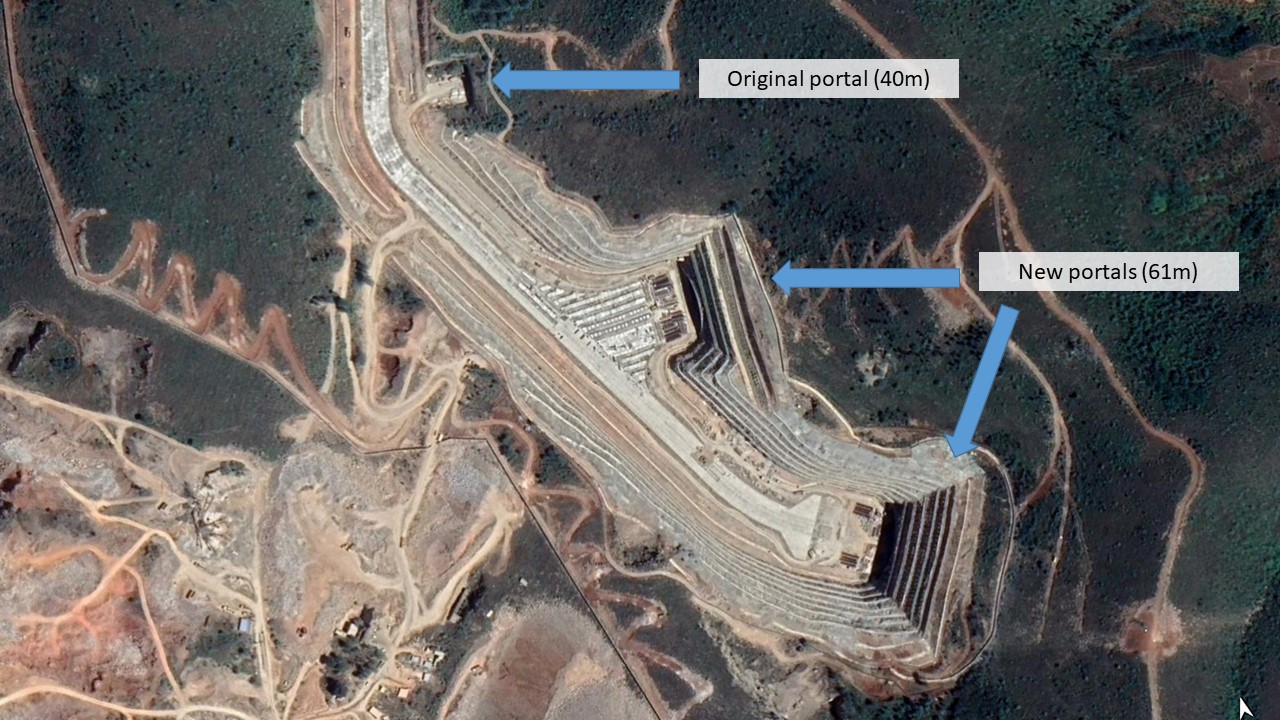
Figure 3: Two larger portals added in the latest renovation. (Google Earth)
The Neixiang Airfield UGF is also built with survivability in mind. The UGF lies under roughly 220 meters of limestone overburden. Assuming that the PLA installed rock supports and tunnel lining commensurate with what is has previously installed at PLA Rocket Force UGFs, the Neixiang Airfield UGF may be able to withstand a 300-400 kiloton surface burst – roughly equivalent to a U.S. B61 nuclear weapon. The two large portals are also on a reverse slope and dug into the middle of the mountain to mitigate cruise missile and low-altitude air attacks.
A Mystery Unit at Neixiang
In addition to the circumstantial evidence suggesting that the PLA could be stationing nuclear-capable bombers at Neixiang and reinforcing the infrastructure with an eye toward nuclear missions, the PLAAF also reactivated what is likely an old bomber unit – publicly known as 93671 Unit.
An academic article published in mid-2018 is the first known reference to 93671 Unit. The article identifies it as an “aviation unit” located in Wugong county. However, by late 2019, the unit appears to have relocated to Nanyang in Henan province – the prefecture in which Neixiang county is located. Subsequent local Dengzhou government press from 2019 suggests that a radar station located 5 miles east of Neixiang provides flight training support for a “106th Brigade.” There is no other known PLAAF unit with this true unit designator and Neixiang is the closest airfield to the radar station in question. 93671 Unit being a brigade-level unit is corroborated by photography of the unit’s political commissar, Sun Jun, showing that he is a brigade-level officer. This all suggests that 93671 Unit is in fact the 106th Brigade.
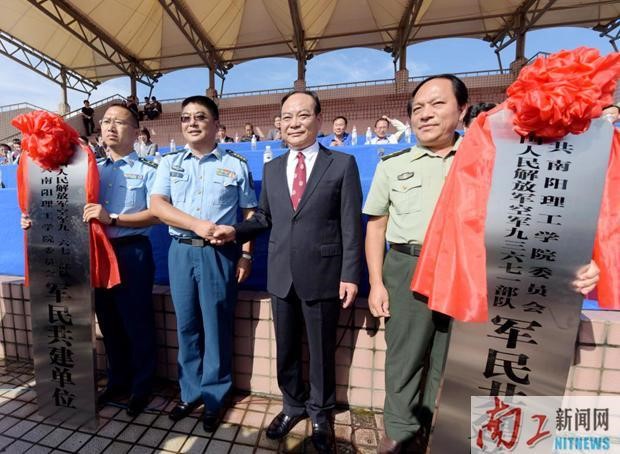
Figure 4: 93671 Unit political commissar Sun Jun at a local event in late 2018. His top center red ribbon with one star indicates he is a division (brigade) deputy leader grade officer. Within the PLA, a unit’s political commissar and commander usually match the unit’s assigned grade.
Overhead imagery also offers some clues regarding what type of aircraft are located at Neixiang. Although publicly available imagery does not show any aircraft stored in the open at Neixiang, the skid mark patterns found on the runway are consistent with the skid marks found exclusively at other H-6 air bases.
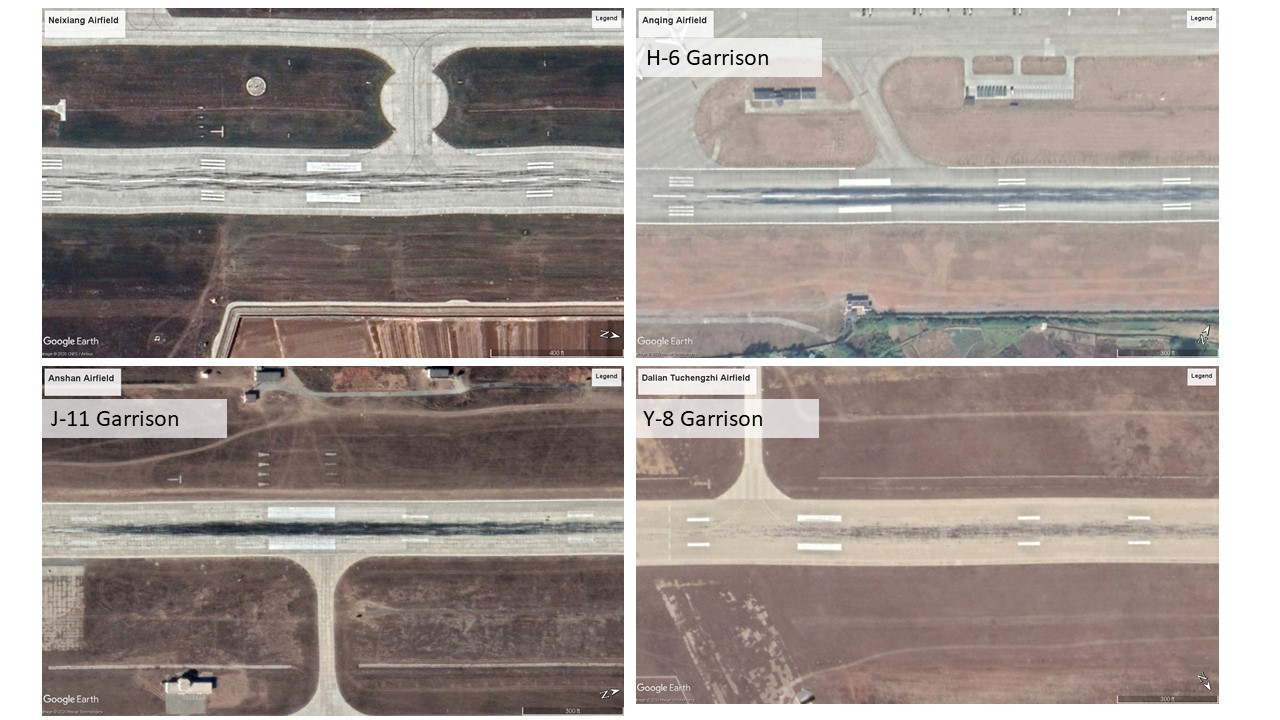
Figure 5: A comparison of skid marks found at Neixiang, a known H-6 garrison, a fighter garrison (J-11), and special mission aircraft garrison (Y-8 and Y-9s).
Circumstantial Nuclear Ties
The two academic articles published by this unit also suggest that 93671 Unit may be involved in nuclear activities. The first article is titled “Development of the First-Generation Associated Particle Tube” and is co-authored by individuals from the PLA Rocket Force Engineering University’s School of Nuclear Engineering, the Chinese Academy of Atomic Energy’s Institute of Nuclear Physics and the Chinese Academy of Engineering Physics. Particle detectors are used to detect, track and identify ionizing particles associated with nuclear decay.
The second article is titled “Molecular Dynamics Study on Effects of Doping Defects on Properties of PBXs” and is co-authored by individuals from the Rocket Force Engineering University and the PLA Navy’s 91515 Unit – a unit likely associated with the Navy’s nuclear submarines at Hainan. Doping of explosives is commonly used to improve detonation performance, and PBX is a common material used for explosive lenses found in fission weapons.
A Lopsided Triad?
Although the PLA has long discussed the potential role of PLAAF bombers in nuclear counterstrike missions, this part of the triad has received the least amount of attention. Assuming that 93671 Unit is indeed a new PLAAF bomber brigade with a nuclear mission, the implication for the U.S. government is that China now possesses a full nuclear triad, albeit somewhat lopsided. In addition to the air-launched component of the PLA’s nuclear triad being relatively small as of 2020, its potential range is also limited. While PLA Rocket Force intercontinental ballistic missiles (ICBMs) and PLA Navy ballistic missile nuclear submarines (SSBNs) can range parts of the continental United States (CONUS) from relatively safe launch locations near or within China, H-6Js equipped with even long-range standoff munitions face a challenging geography should they wish to target CONUS.
In order to range CONUS targets, an H-6J and accompanying tankers would have to either fly over Russian airspace, or take a vulnerable 8,000 km route across the Pacific. Neither of these options seems optimal. This begs the question of why the PLA is pursuing an air-launched nuclear capability in the first place.
There are at least three non-mutually exclusive plausible explanations for why the PLA is pursuing a nuclear-armed bomber force:
- Other Nuclear Neighbors: The U.S. is obviously not the only power with which the PLA must contend. China shares land borders with four nuclear states (Russia, India, Pakistan and North Korea) and has an active border dispute with one (India). Nuclear armed H-6s may be intended to deter and retaliate against one or more of China’s nuclear neighbors.
- Tactical Use: Discussions in the “Science of Second Artillery Campaigns” suggests that military bases are acceptable targets during a nuclear counterattack. H-6s equipped with nuclear-armed standoff munitions may be intended to deter U.S. regional allies from getting involved in a conflict and to retaliate against U.S. bases if necessary.
- A Safer Pacific in the Future: The PLA might see the Western and Central Pacific as being a “safer operating area” in the next few decades, although there is no PLA discourse discussing such a future. If the PLA is able to push most U.S. forces beyond the second island chain in the coming decades, long-range bomber flights supported by tankers could range CONUS targets with greater confidence than they can at present. In the meantime, the PLA wishes to establish nuclear mission competencies within the PLAAF.
At this point, one might expect a cursory list of “big things to do” to respond to the new development. However, the U.S. is already doing many of these things. Instead, the possible emergence of a PLAAF bomber unit with a nuclear mission suggests two “small things to do” for the U.S.
First, this unit can serve as a starting point or supplementary information when discussing Chinese theater nuclear weapons policy. Just as the emergence of the nuclear DF-26 intermediate range ballistic missile prompted discussions of risk and ambiguity, the possibility of nuclear-armed H-6Js should add to that discussion. Second, observers can now use the activities at Neixiang and of the 93671 Unit as an additional data point when trying to better understand overall Chinese nuclear policy. The PLA typically shrouds the activities of its nuclear units in secrecy, but cannot totally eliminate all public traces. Knowing that 93671 Unit may be called to participate in nuclear counterstrikes will help guide further research into how the PLA views nuclear war.
Roderick Lee is the director of research at the Air University’s China Aerospace Studies Institute (CASI), where he oversees research on Chinese military aerospace forces and the Chinese civilian aerospace sector as it relates to the military. He earned his Master of Arts degree from The George Washington University’s Elliott School of International Affairs.













